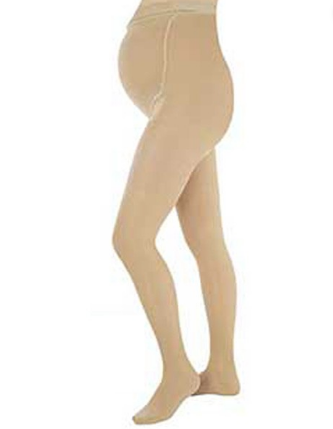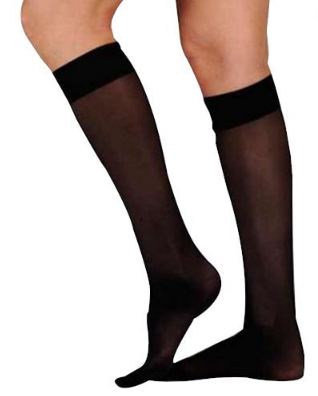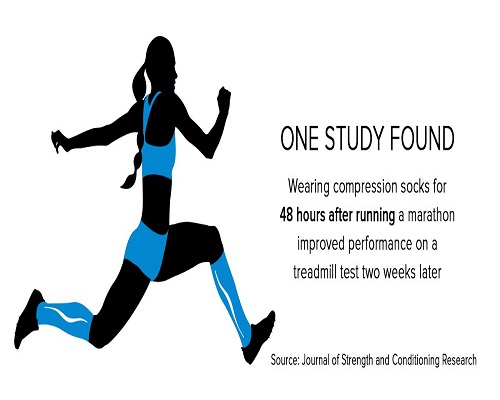Some Practical Consumer Guidelines Regarding Various Compression Stockings
The history of modern compression stockings or hosiery can be found in Roman writings describing ancient war wound treatment practices. We can find evidence regarding how soldiers bound up their leg wounds with long strips of cloth that were wrapped in a specific manner to stop bleeding and/or to encourage better blood flow. Some evidence points to binding the ankle with mild bandages to avoid swelling.
Sometime around 1912, European doctors began using compression-type garments for a vast array of medical conditions.
These compression hosiery items didn’t really come into vogue in the US until during and just after World War II. These compression garments focused more on swelling and veins. They were specially designed (in lieu of medications) to combat swelling disorders and varicose veins.
How Do I Buy Compression Socks?
Want to Stop Leg Swelling and Improve Athletic Performance?
ComproGear Compression Socks are designed to stop swelling instantly!
Click the button below to see the lineup of ComproGear Compression Socks:
Hospitals and physicians began using these compression stockings in the 1950s, and they became the standard treatment for circulatory conditions, such as varicose veins and lower leg edema, following surgeries or due to diabetes or heart conditions.
Today compression stockings are specially designed to help your ankle, foot, calf, and legs.
Plus, they can free you from swelling related pain! In fact, there is some evidence that graduated compression stockings can prevent varicose veins and a whole host of leg disorders caused by excess pressure.
Does Wearing Hosiery During Pregnancy Help?
The use of various styles of compression hosiery has been touted as beneficial for individuals who have lower leg circulation limitations and certain health conditions.

Having a baby is a tough job!
Many wondered if wearing pantyhose or hosiery during a healthy pregnancy really mattered all that much. According to a recent study on this subject in 2016, pregnant women who wore compression hosiery reported beneficial results from the group designated to wear these garments.
Luckily, graduated compression stockings have advanced to the point where many pregnant women use them throughout their entire pregnancy.
Pregnant women note benefits from wearing compression stockings like increased circulation and decreased ankle pressure.
These benefits included less low leg edema, a decrease of leg fatigue and discomfort and no development of deep vein blood clots during and several weeks following pregnancy and childbirth. Since this was a smaller scale study, more research needs to occur to fully demonstrate the findings accurately.
The Impact Hosiery Has on People Who Stand/Sit a lot
There are many jobs and professions that require a person to sit still or stand for long periods of time during their normal workday duties. Some of the jobs that could pose a negative impact on lower legs, ankles, and feet include:

- Police officers
- Nurses & other healthcare workers (compression socks for nurses)
- Doctors especially surgeons, pharmacists
- Bus, taxi & train drivers
- School teachers
- Postmen, accountants
- Airplane pilots
- Assembly line workers
- Retail sales associates
- Secretaries (…and others that sit at desks all day)
- Cooks, Waitresses, Housekeepers
All of these individuals have a higher risk to develop various foot, ankle and leg pain, swelling, or other discomforts, and they may benefit immensely by wearing compression stockings while at work.
Mild swelling and decreased blood flow from work activities could even lead to varicose veins!
Want to Stop Leg Swelling and Improve Athletic Performance?
ComproGear Compression Socks are designed to stop swelling instantly!
Click the button below to see the lineup of ComproGear Compression Socks:
Related Articles about Compression Socks
For Doctors & Nurses Compression Socks for Nurses 20-30 mmHg Great for Standing All Day
Mens and Womens Compression Socks Wide Calf 2XL 3XL 4XL 5XL 6XL
Compression Socks for Swollen Feet, Calves, and Legs
Ankles and Compression Socks – Are Compression Socks Good for Swollen Ankles?
What Types of Health Conditions Can Compression Hosiery Help?
Certain medical conditions can be eased by wearing properly fitted compression stockings.
These hosiery items have been shown to lower the risk of developing deep vein thrombosis (DVT). The risk for DVT increases immediately following surgeries, while flying in an airplane, in women who are pregnant, and those who suffer some type of chronic health condition that impacts blood circulation.
These health issues can include:
- Injury to the Achilles heel, common in high impact sports
- Plantar fasciitis
- Diabetes
- Chronic vein insufficiency
- Immobility
- Obesity
- And other diseases related to veins and blood circulations.
Supportive hose gently provide compression that is generally tighter around the ankle area and gradually decreases as the stocking moves up the calf. When used correctly, the improved circulation from wearing compression stockings can lessen the risks of developing serious leg sores and ulcers especially in the elderly patient groups that have limited mobility.
What Types of Compression Stockings Are Best?
What level of compression socks do I need?
There are many types of compression style hosiery that can be found these days. Each brand will have different pros and cons, and these special circulation-boosting compression stockings come in a number of sizes and compression stocking strengths or levels. The different levels of hosiery include:

15 – 20 mmHg knee-high hosiery
This compression level is generally the lowest available. These compression stockings do not need a prescription and can be found in medical supply retail sites, pharmacies, and online. This grade of compression stockings can be worn daily, and they are generally considered comfortable to wear and easy to put on. These can be found in many design styles and comfort features.
20 – 30 mmHg knee-high hosiery
This next level of compression garments are usually best for lower leg edema, otherwise termed swelling, non-complicated varicose veins and are often recommended for people who have chronic but not severe circulatory limitations or conditions. This is a common compression grade to use following certain types of surgery for the immediate post-surgery recovery period.
30 – 40 mmHg knee-high hosiery
These compression stockings provide more compression strength than the previously mentioned hosiery grades and are often recommended for people who suffer from moderate to the serious chronic lower leg and foot health conditions. These conditions include those diagnosed with lymphedema, a serious blood clot in the leg and those who have more severe varicose vein symptoms.
You’ll often hear the term “Graduated Compression Stockings.” This means that pressure exerted by the sock is higher at the ankle and lower on the calf and upper leg. The goal is to assist blood flow by placing the most pressure where blood is most likely to pool (in the feet and ankles).
Sizing goes from small to 6xl compression socks.
How To Pick the Best Hosiery for Your Needs

In addition to different grades of compression hosiery, this specialty hosiery can also be found in regular sock length, knee-high versions, thigh-length models, and waist-high pantyhose styles.
Pregnant women will also find maternity support stockings with a special belly stretch portion that comfortably stretches as the pregnancy progresses.
Additionally, athletes and those who just want a minimal sock will find brands that cater to the sport population groups. These are generally made from quick-drying, moisture-wicking fabrics and often have extra comfort cushioning for heels, toes or added ankle support.
The goal of all compression hosiery is the same:
Improve Blood Flow
(aka “Improve Circulation”).
Does Hosiery Have to Be Fitted by a Specialist?
No. You can fit your own clothes. However, there are some exceptions to this general rule.
When compression stockings are prescribed by a physician for a specific medical reason, the compression stockings should be measured by a health professional trained on how to perform the task. These medical-grade socks will have a compression level somewhere from 20 to 40 mmHg.
It is essential to get the appropriate size for better end results and fewer complications due to wearing them. Otherwise, consumers should get familiar with what sizes and styles of compression-related hosiery that they are looking for and go by the manufacturer label for a good fit.
Want to Stop Leg Swelling and Improve Athletic Performance?
ComproGear Compression Socks are designed to stop swelling instantly!
Click the button below to see the lineup of ComproGear Compression Socks:
Some Nurses’ Tips for Putting On Compression Socks
Since compression hosiery is designed to fit snug when worn, it can be difficult for ordinary individuals to master putting these garments on in the right manner. Nurses have some great tips for making this process a little easier.
Preparation Before Putting on the Compression Sock
Consider applying lotion to your legs and allowing the legs to dry before attempting to put the stockings on.
The stocking should be stretched between both hands creating an accordion-like tube especially for garments that are open at the toe region.
Consider Purchasing a Stocking Donner
If you are unable to master this move, consider inquiring about a specialized medical tool sold by medical supply companies and some pharmacies called a stocking donner. This product makes it easier to slide the stocking up over the foot and leg without bunching.
More Ideas to Help the Sock Slide Better
Also, consider sprinkling a small amount of corn starch or baby powder over the legs to make the material slide better.
Some nurses also swear by putting on typical rubber kitchen gloves to better grip the stocking material without catching the stretchy fabric yarns that can unravel the stocking.
Remember that knee-length compression stockings should be about a two-finger width down the length from the back of the knee area. The material should be smoothed out, and there should not be any bunching up of the material, as bunching could cause too much pressure, leaving skin indentations or constricting blood flow.
Advantages of Wearing Hosiery During Sports

Many athletes and sports enthusiasts highly recommend wearing hosiery during certain types of sports and other activities.
Many fitness experts advocate for wearing these compression hosiery selections to boost muscle workout recovery times following aggressive movements during a workout session.
There have been some promising studies on the effects of compression stockings related to sports that athletes and sports enthusiasts should seriously consider.
How to Care for Your Hosiery
Like any garment that lies next to your skin, your special compression stockings need the proper care for longer life and to avoid troubling complications.
These socks are best gently washed by hand in mild soap recommended for hosiery.
Never throw these into a dryer as the stretchy compression action of the socks could be diminished due to the higher heat.
Instead, hang socks up to air dry after rolling wet socks in an absorbent towel to soak up most of the moisture. Those that workout more than once a week should invest in two or more pairs. This allows individuals to always have a clean and dry pair of socks ready to put on.
How Long Should Someone Wear their Hosiery?
This will depend on why the person is wearing the garment, to begin with.
For example, if the goal is to decrease risks of a DVT following surgery, the surgeon will stipulate how long the patient should wear their compression socks. Typically, these are worn until the patient is back walking around again. Others who are wearing these socks for chronic health conditions might want to wear them while out of bed, or however, their doctor recommends for best results.
Some only wear these socks while they are engaged in sports activities or other types of exercise. Most people will want to take their socks off before going to sleep. It is also important to monitor your skin underneath the compression style socks to catch any skin rashes, sores, or other signs of problems.
Healthy Guide
There are many advantages of wearing compression stockings. These socks can provide symptom relief from leg fatigue, discomfort, or swelling. When worn as directed, these garments can help support vulnerable ankles and foot areas when engaged in athletic pursuits and may help prevent potential circulation related problems too.
ComproGear Compression Stockings
Want to Stop Leg Swelling and Improve Athletic Performance?
ComproGear Compression Socks are designed to stop swelling instantly!
Click the button below to see the lineup of ComproGear Compression Socks:
References
This page last updated July 3, 2022
